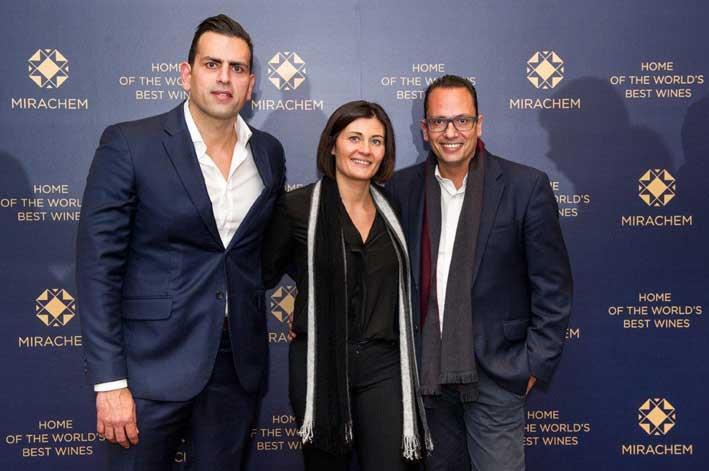A much-anticipated evening with Gaja brand ambassador Gaia Gaja attracted an appreciative audience earlier this month. Hosted by local representatives Mirachem, Ms Gaja spoke enthusiastically about her family origins, the town of Barbaresco in Piedmont where she was born, and the passion her family invests in making wines.
The event consisted of a highly stimulating and wide-ranging presentation by Ms Gaja in the Palm Suite at the InterContinental Hotel in St Julian's, followed by a walk-around tasting in which the selected guests had the opportunity to try wines from the three estates belonging to the Gaja family, one in Piedmont and two in Tuscany, along with a selection of cheeses and hors d'oeuvres.
For the past five generations, since 1859, the Gaja family has been producing Barbaresco wine with Nebbiolo grapes in the eponymous town in Piedmont (population: 637). Their winery is one of a hundred in the town and up to around 25 years ago Barbaresco wine was considered to be the number two in the region.

Nicholai and Andre Grech with Gaia Gaja at the wine event
Gaia takes up the story: "With Nebbiolo, you can make two wines: Barbaresco or, 20km further up the road, in another area called Barolo, always with 100% Nebbiolo, you can make another wine called Barolo. Historically, Barolo was considered the more important and Barbaresco the less important, (but) my family changed this perception."
Vines planted in Barolo, where the soil is more compact, produce more compact, more powerful and more ageable wines. Barbaresco is like a Barolo but less tannic, less structured, less ageable and, Gaia stressed, less can be also a great plus. Barbaresco can be less tannic, so it is less austere, more gentle and elegant, and easier to drink. If Barolo is said to be the king, the male expression of Nebbiolo, Barbaresco is the female expression - more floral, gentler but a tough woman nonetheless.
The current Gaja generation, apart from Gaia, consists of her Sister Rossana, born two years after her and Giovanni, born 14 years after her. While Rossana works in the family business, Giovanni is expected to join next year after having worked in America. When he was born, Gaia's father Angelo, who is 77, felt much more confident and optimistic about the future of the winery.
The following year he bought the first of two estates in Tuscany, 27 hectares of land with the Pieve San Restituta Winery in Montalcino and in 1996 he bought 120 hectares of land with the Ca'Marcanda Winery in Bolgheri, just 5km from the sea. In Montalcino they work with San Giovese grapes to make Brunello and in Bolgheri they are one of 50 wineries and work with international grape varieties, including Merlot, Cabernet Franc, Petit Verdot and Syrah, and on a small scale with Sangiovese.
Gaia described her father's 56-year career as a winemaker as "a hurricane of change", yet his main philosophy is that although he believes with conviction in what he does "we always have to keep 30% of doubt" because if he were absolutely right there would be no margin for improvement.
Angelo Gaja has been addressing the issue of climate change for the past 15 years and, little by little, has changed the entire way of working in the vineyards and the wineries. He agreed to bring in outside consultants - on condition they did not work for any other winery - and they have taken advice from botanists, entomologists (who study insects), geologists and geneticists.
Another distinguishing feature of the way the Gaja family work is that they want to build their wine farming culture at their various establishments by retaining their workers - 130 across the three estates - all the year round. They do not work with co-operatives or part-timers.
"What we try to do even in Toscana - Promis and Magari 2015 - is to make elegant wines," Gaia said. "I am using a word that is overused - 'elegance' - and I also know that elegance is a very subjective term. You can measure power; you can't measure elegance. We try to focus on wines that can be needle structured not uni-structured; wines that can keep a lightness (and) a drinkability, trying to have an alcohol level that is not too high and not to have wines that are too dense."